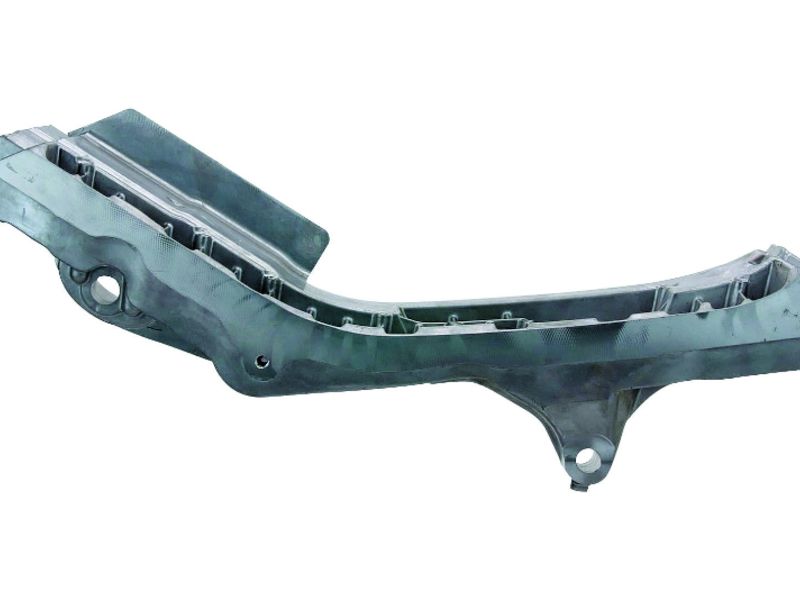
Batteries are adding weight to vehicles in the emerging electric vehicle era. Henkel Corp. is developing weight-saving concepts to offset the addition, by introducing adhesive products to battery structures.
The German chemical, electronics assembly and consumer goods supplier says its Loctite- branded adhesives for constructing battery packs offer a reduction in weight, in addition to dispensing faster, curing in less time and costing less than earlier iterations of industry adhesive-bonding applications.
It’s a critical opportunity as automakers switch from using old-fashioned nuts and bolts and welds to other bonding materials.
“Fasteners and rivets are painful to work with,” said Pradyumna Goli, Henkel’s business development manager for eMobility. “With adhesives and sealants — anything material-based — you get more homogeneous and consistent performance, and you know exactly what to expect.”
But that puts new pressure on the supplier.
“Now the adhesives are responsible for the majority of structural integrity. We have to provide the kind of performance these cars would need over their lifetime,” he said.
“That is what is driving the majority of innovation on our end.”
As EVs proliferate, battery designs are requiring bonding materials that are strong and light but also that transfer heat. The company’s thermally conductive adhesives, marketed under the name Bergquist, have an added element of heat management.
Higher energy densities and fast charging could strain EV batteries, resulting in overheating or thermal runaway that ultimately impacts battery performance.
The thermally conductive qualities of Henkel’s adhesives can manage some of the heat stress.
But getting these features right required some innovation in chemistry, curing and dispensing, Goli told Automotive News.
“What these thermally conductive adhesives, or thermal gap fillers, do is optimize the interface between the two metal surfaces for efficient heat transfer,” Goli said. “For thermal management of the battery pack itself, you need the highest conductivity you can get. But in case of thermal runaway, you want to prevent heat flow.
“You have to tune and adjust, so the heat transfer is just enough to keep the batteries cold, and also reduce the amount of heat that propagates the cells,” he added. “With thermally conductive adhesives, you’re hitting two birds with one shot.”
To accommodate vehicle lightweighting needs, Henkel has developed adhesives that can adhere to hard-to-bond surfaces other than metals, said Nicholas Bewick, the supplier’s senior chemist for automotive components bonding technologies. Henkel also is developing foams and fillers to make the adhesives themselves lighter.
Many of the supplier’s adhesives — such as its lithium ion battery cell adhesives developed with Covestro — bond to a variety of substrates and cure in a matter of seconds.
For this, Henkel uses ultraviolet-curing technology and UV-transparency polycarbonate blend.
“For UV-curable adhesives, you need a material that’s transparent to the light you’re radiating with,” Bewick said. “The UV light excites an additive in the adhesives that allows for polymerization to occur, and that happens almost instantaneously.”
Henkel can tune the adhesive’s curing time depending on the application of the product. In other instances, Henkel combines epoxy, silicon, acrylic and polyurethane chemistries to create different curing profiles that could cure at a slower pace if the customer needs more working time for assembly.

